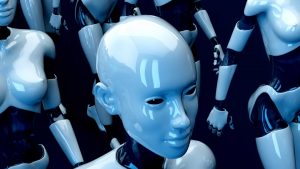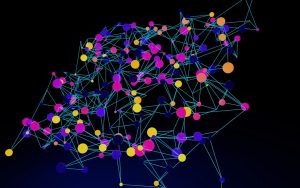OpenAI Unveils New Open Source Models for Developers
Discover how OpenAI’s new open source AI models empower developers. Dive in to explore their potential and elevate your projects today.
OpenAI’s Latest Breakthrough
Introduction to Open Source Models
OpenAI has recently made significant strides in the AI community by releasing two new open-source models. This move aligns with OpenAI’s mission to ensure that artificial general intelligence benefits all of humanity.
By making these models open source, OpenAI is fostering transparency and collaboration, allowing developers and researchers worldwide to contribute to and improve upon these technologies.
Features of the New Models
The newly released models are designed to be versatile and powerful, catering to a wide range of applications. They incorporate state-of-the-art neural network architectures that enhance performance and efficiency.
The models are equipped with features that allow for seamless integration into various platforms, making them accessible to both novice and experienced developers.
Additionally, these models have been optimized for faster processing speeds and lower computational costs, making them more sustainable and feasible for large-scale deployment.
Impact on the AI Community
The release of these open-source models is expected to have a profound impact on the AI community. By providing access to these advanced technologies, OpenAI is democratizing AI research and development.
This move is likely to accelerate innovation, as researchers can now build upon OpenAI’s work without the constraints of proprietary software.
Moreover, the open-source nature of these models encourages collaboration across various sectors, including academia, industry, and government, potentially leading to breakthroughs in fields such as healthcare, education, and environmental science.
Future Prospects
OpenAI’s decision to release these models as open source marks a pivotal moment in the organization’s history. It sets a precedent for other AI companies to follow, promoting a culture of openness and shared progress.
Looking forward, OpenAI plans to continue developing and releasing more open-source models, further contributing to the global AI ecosystem.
This breakthrough not only fulfills OpenAI’s commitment to its name but also paves the way for a more collaborative and inclusive future in artificial intelligence.
Two New Open Source AI Models
Model 1: OpenAI GPT-Open
OpenAI has introduced GPT-Open, a new open-source version of its renowned language model. This model is designed to provide developers and researchers with unprecedented access to the inner workings of a state-of-the-art AI language model.
GPT-Open offers a comprehensive toolkit for natural language processing tasks, including text generation, translation, and summarization.
The open-source nature of GPT-Open allows for extensive customization and experimentation. Developers can fine-tune the model on specific datasets, adjust parameters, and even contribute to its ongoing development.
This level of transparency and flexibility is expected to foster innovation and collaboration within the AI community.
Model 2: OpenAI Vision-Open
In addition to GPT-Open, OpenAI has released Vision-Open, an open-source model focused on computer vision. Vision-Open is designed to tackle a wide range of image processing tasks, such as object detection, image classification, and segmentation.
By making Vision-Open accessible to the public, OpenAI aims to accelerate advancements in the field of computer vision.
Vision-Open is equipped with state-of-the-art algorithms that have been optimized for performance and accuracy. The model is highly adaptable, allowing users to train it on custom datasets to meet specific project requirements.
This adaptability, combined with its open-source availability, positions Vision-Open as a valuable resource for both academic research and practical applications.
Impact on the AI Community
The release of these two open-source models marks a significant shift in OpenAI’s approach, aligning more closely with its original mission of promoting openness and collaboration in AI research. By providing access to cutting-edge technology, OpenAI empowers developers, researchers, and organizations to explore new possibilities and push the boundaries of what AI can achieve.
This move is expected to enhance the diversity of AI applications and democratize access to powerful AI tools.
It also encourages a more transparent and inclusive AI ecosystem, where knowledge and resources are shared freely, leading to accelerated progress and innovation in the field.
Advancing AI Technology
OpenAI’s Commitment to Open Source
OpenAI has taken a significant step forward in advancing AI technology by releasing two new open-source AI models. This move aligns with the organization’s mission to make AI technology more accessible and transparent.
By providing open-source models, OpenAI empowers developers, researchers, and businesses to leverage cutting-edge AI tools without the constraints of proprietary software.
Enhanced Collaboration and Innovation
The release of these open-source models fosters a collaborative environment where developers and researchers can contribute to and improve upon existing AI technologies. This collaborative approach accelerates innovation, as it allows for a diverse range of insights and expertise to be applied to the development and refinement of AI models.
The open-source nature of these models also encourages the sharing of knowledge and best practices within the AI community.
Technical Advancements in AI Models
The new AI models introduced by OpenAI showcase significant technical advancements. These models are designed to be more efficient, scalable, and adaptable to various applications.
They incorporate state-of-the-art algorithms and architectures that enhance their performance and accuracy. By making these advancements available to the public, OpenAI is setting a new standard for AI development and encouraging the adoption of best practices across the industry.
Impact on Industry and Society
The open-source release of these AI models has the potential to transform various industries by enabling more organizations to integrate advanced AI capabilities into their operations.
Sectors such as healthcare, finance, and education can benefit from improved data analysis, automation, and decision-making processes. Additionally, the democratization of AI technology can lead to societal benefits, such as increased accessibility to AI-driven solutions and the potential for addressing complex global challenges.
Future Prospects and Challenges
While the release of open-source AI models by OpenAI marks a significant milestone, it also presents new challenges and opportunities.
Ensuring the ethical use of these technologies and addressing potential biases in AI models remain critical concerns. OpenAI and the broader AI community must continue to prioritize responsible AI development and deployment to maximize the positive impact of these advancements on society.
OpenAI’s Commitment to Innovation
Embracing Open Source
OpenAI has taken a significant step towards transparency and collaboration by releasing two new open source AI models.
This move aligns with the organization’s long-standing vision to drive innovation through open access to cutting-edge technology. By making these models available to the public, OpenAI invites developers, researchers, and enthusiasts to explore, modify, and enhance the capabilities of artificial intelligence in a collaborative environment.
Fostering Collaboration
The release of open source models underscores OpenAI’s belief in the power of community-driven development.
By providing access to these models, OpenAI encourages a diverse range of contributors to participate in the AI ecosystem. This collaborative approach not only accelerates the pace of innovation but also ensures that AI technologies are developed with a broader perspective, incorporating insights from a global community of experts and users.
Driving Technological Advancement
OpenAI’s commitment to innovation is evident in its continuous efforts to push the boundaries of what AI can achieve.
The introduction of new open source models is a testament to OpenAI’s dedication to advancing the field of artificial intelligence. These models are designed to address complex challenges and provide robust solutions that can be adapted and improved upon by developers worldwide, thus driving technological progress.
Ensuring Ethical AI Development
In addition to promoting innovation, OpenAI is committed to ensuring that AI technologies are developed ethically and responsibly.
By releasing open source models, OpenAI fosters transparency and accountability, allowing the community to scrutinize and contribute to the ethical development of AI. This approach helps mitigate potential biases and ensures that AI systems are developed with fairness and inclusivity in mind.
FAQ
Q1: What are the potential costs associated with adopting OpenAI’s new open-source AI models?
A1: Adopting OpenAI’s new open-source AI models can be cost-effective compared to proprietary solutions, as the models themselves are freely available. However, there are several potential costs to consider. Firstly, there may be expenses related to the infrastructure required to run these models, such as cloud computing resources or local hardware upgrades. Additionally, organizations might need to invest in skilled personnel or training for their existing team to effectively implement and maintain these AI models. While the open-source nature reduces licensing fees, the total cost of ownership can vary based on the specific needs and scale of implementation.
Q2: How accessible are these open-source AI models for non-engineers or small businesses without a dedicated tech team?
A2: OpenAI’s new open-source AI models are designed to be more accessible, but non-engineers or small businesses may still face challenges. The open-source community often provides extensive documentation and community support, which can help bridge the gap for those without a technical background. However, some level of technical understanding is typically required to effectively deploy and customize these models. Small businesses might consider partnering with third-party service providers or consultants who specialize in AI to facilitate the implementation process. Additionally, leveraging user-friendly platforms and tools that integrate these models can further enhance accessibility for non-technical users.
Q3: What are the potential implementation challenges when integrating OpenAI’s open-source AI models with existing tools and systems?
A3: Integrating OpenAI’s open-source AI models with existing tools and systems can present several challenges. Compatibility issues may arise if the current infrastructure is not designed to support AI workloads, necessitating upgrades or modifications. Data integration is another critical aspect; ensuring that the AI models can access and process data from various sources within the organization can be complex. Additionally, businesses must consider the scalability of their solutions, as AI models often require significant computational resources. Addressing these challenges may involve technical expertise to customize and optimize the integration process, as well as ongoing maintenance to ensure seamless operation and updates as the technology evolves.
Takeaway
“Ready to supercharge your workflow with AI? Try our cutting-edge AI tool today! Stay ahead of the curve with the latest tech trends – subscribe now. Join our vibrant tech community to connect, learn, and grow together. Let’s innovate, together!” According to a report by Bloomberg,











Comments